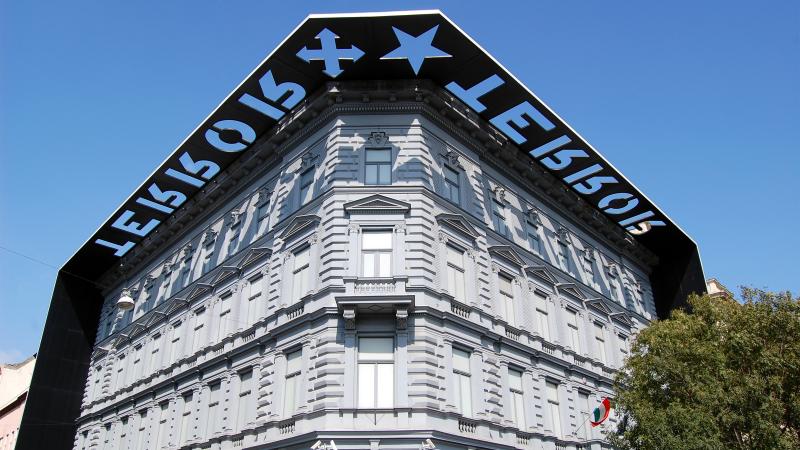Rick Steves’ Europe: Cold War memories in Budapest
Appears in the Online Edition, February 2022.
Back in the 1980s, on a train heading for Budapest, I stood in the aisle with my elbows on the edge of an open window, enjoying the moonlit countryside rushing by. I was soon joined by a Czech woman who was doing the same thing. She told me she was on her first trip out of her country. I asked her if she was excited about visiting Budapest. She said she was most excited about eating a McDonald’s hamburger. The buzz throughout Eastern Europe was that Hungary had just opened a branch of the American chain.
If communism was a religion during the Cold War, Budapest was Eastern Europe’s sin city, offering tourists from communist countries a taste of the decadent West: rock concerts, Adidas sports gear, and the first McDonald’s east of the Iron Curtain. Back then, eating a Big Mac was an act of defiance. There was nothing fast or cheap about Western “fast food.” A Happy Meal was a splurge. People traveling from other communist countries to Hungary waited in lines that stretched around the block for a burger, fries, and a Coke. Ronald McDonald stood on the street corner like a heretic prophet, cheering on the downtrodden proletariat, while across the street, wannabe capitalists drooled over window displays featuring running shoes that cost two months’ wages.
As I visit Budapest today, it’s clear that the younger generation of Eastern Europeans has no memory of the communist era. Enough time has passed that former Warsaw Pact nations can take an honest look at the period.
My first stop on this trip is the House of Terror, long the headquarters of communist Hungary’s secret police. When the Communists moved into Budapest after World War II, their secret police took over the Nazis’ secret police headquarters. It was here that Hungarians suspected of being “enemies of the state” were given sham trials, tortured, and routinely executed. The museum’s atrium features a Soviet tank and a vast wall plastered with portraits of victims. Exhibits cover gulag life, Social Realist art, and propaganda. A labyrinth built of pork-fat bricks reminds old-timers of the harsh conditions in the 1950s, when lard on bread was the standard dinner.
I enter the elevator to continue into the museum. As it slowly descends, a guard on video explains the execution process. When the door opens, I step into the basement chambers of torture and death. In 1956, the blood was hosed away and this cellar was made a clubhouse for the local communist youth club. In the museum today, it has been restored to its condition circa 1955, with chilling prison cells instead of ping-pong tables and chess sets.
In the museum’s poignant finale, the “walls of victimizers” are lined with the photos and biographical information of members and supporters of both the Nazi and communist secret police — many of whom are still living and were never brought to justice. The House of Terror must be a particularly powerful experience for elderly Hungarians who actually knew many of the victims of the secret police ... and who remain neighbors of the victimizers.
When regimes fall, so do their monuments. Across Eastern Europe, statues of Stalin, Lenin, and their local counterparts came crashing to the ground. In Budapest, these stony reminders of communist tyranny are collected in Memento Park, where tourists flock to get a taste of the communist era. I head over for a lesson in Social Realism, the art of communist Europe. Under the communists, art wasn’t just censored. It was acceptable only if it furthered the goals of the state. Aside from a few important figureheads, individuals didn’t matter. Statues featured the generic working man or working woman. Everyone was a cog in the machine — unquestioning servants of the nation.
Wandering through Memento Park, I’m entertained by the jumbled collection of once fearsome and now almost comical statues. While they seem to preach their ideology to each other, locals and tourists take funny photos mocking them. The gift shop hawks a fun parade of communist kitsch. I pick up a Stalin vodka flask and a CD featuring 20 patriotic songs — the Greatest Hits of Communism. It occurs to me that Stalin — whose estate gets no royalties for all the merchandise featuring his dour mug — must be spinning in his communist grave.
(Rick Steves (www.ricksteves.com) writes European guidebooks, hosts travel shows on public TV and radio, and organizes European tours. This article was adapted from his new book, For the Love of Europe. You can email Rick at rick@ricksteves.com and follow his blog on Facebook.)

